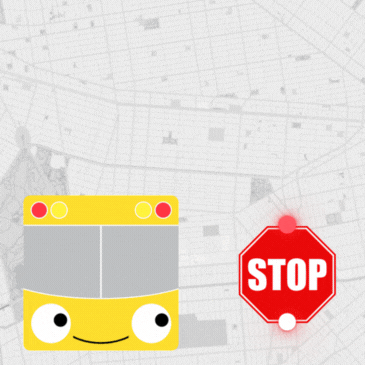
Weekly Story: Where is the Aron?
by Rabbi Sholom DovBer Avtzon
I am posting a thought I mentioned at a pre-Shavuos farbrengen. As always, your comments and feedback are welcomed and greatly appreciated.
During the three days before Shavuos we learned and completed the last chapter of Likkutei Amorim, the first part of the Tanya. In that chapter the Alter Rebbe notes that in the first Beis Hamikdash there was a tremendous level of revelation of the Shechina in the world. However, being that in the second Beis Hamikdash the Aron and Luchos were missing, therefore, the amount of shechina that was present and revealed was much lower than previously. Nowadays, since the Beis Hamikdash is destroyed, our sages inform us that the shechina is now found in the four cubits of halacha. While learning that chapter, I reminded myself of a well-known story that chassidim have always related to their children.
Reb Zev Kitzis was one of the Baal Shem Tovs outstanding talmidim (disciples). One day he came to the Baal Shem Tov and told him of his tremendous yearning to live in Eretz Yisroel and he is coming to ask the Rebbe’s permission to move there.
The Baal Shem Tov replied that he should not go. Hearing this from his Rebbe he obeyed and tried to remove the thought from his mind However a few months later that desire returned with more intensity, and he felt he has to go. Knowing that the Baal Shem Tov told him not to, he tried to dismiss it from his mind, but as much as he tried the desire remained. A year passed and he felt he just can’t control his desire anymore so he went back to the Baal Shem Tov, and asked a second time, but once again the answer was that he should not go. Hearing this answer for a second time he realized that he should not go and just focus on doing whatever he was doing with more intensity. But there was no denying the fact, that he constantly kept on thinking about settling in Eretz Yisroel. So at the end of another year, he asked this question for a third time, and as you might expect the answer remained the same, you are to remain here.
Reb Zev understood that the decision is never going to change, and he resolved that this is it and accepted it. However, after some time fast passed, the yearning came with such a powerful sense of urgency, and he just couldn’t shake it off. It came to a point that it consumed him day and night and he felt that the Baal Shem Tov would understand his decision and he sold his belongings and began the journey to Eretz Yisroel.
At that time the way one traveled from Ukraine/Russia to Eretz Yisroel was through Konstantopoulos, Turkey. From there you continue by boat to Eretz Yisroel. Arriving in Turkey he purchased a ticket for a boat which was to depart on Sunday. He then rented a room until after Shabbos.
On erev shabbos, as he was walking on the road he heard or saw a wagon and moved to the side to let the wagon pass. To his utter surprise, the wagon stopped next to him and looking up he saw that the passenger in the wagon was none other than the Baal Shem Tov himself. The Baal Shem Tov asked, Reb Zev, what are you doing here? Reb Zev was honest, and he replied, Rebbe, I couldn’t stop thinking about living in Eretz Yisroel and the thought just consumed me until I felt I had to go.
The Baal Shem Tov nodded understandingly and said, may you go in good health and be successful.
Reb Zev felt a sense of tremendous relief as the Rebbe finally gave him permission, so he doesn’t have to feel that he went against the wishes of his Rebbe.
The Baal Shem Tov then asked him, “Reb Zev were you in the mikva today?”
Reb Zev replied, “I was not, as I do not have any more money to pay for the mikva.” The Baal Shem Tov replied, “I will pay for you come with me.”
After he came out of the mikva, Reb Zev said, Rebbe, I no longer desire to go to Eretz Yisroel, I am returning with you. The Baal Shem Tov asked what happened?
Reb Zev replied, while I was in the mikva I had a vision. I saw that I boarded the boat and felt wonderful, my desire is finally going to be fulfilled. A moment later, I felt euphoric as I noticed the shore of Eretz Yisroel in the distance. When the boat docked, I rushed off and kissed the land. After getting up, I began walking and suddenly I noticed the city if Yerushalayim in front of me. I became ecstatic, as my dream and desire is finally being fulfilled. A moment after entering Yerushalayim, I saw the Beis Hamikdash, and I felt as if I was uplifted and floating in the air. I never felt such elation.
Then the doors of the Beis Hamikdash opened, and I looked in and to my horror and shock I saw that the Aron and Luchos were missing. Full of grief and sadness, I turned to the malach and cried out, where are the Aron and the Luchos?
The Aron and Luchos, they are in Mezibuz!
Raboisai, let us come to the same realization that Reb Zev came to, and connect ourselves to the Shechina, which is together with the Aron and Luchos.
By doing so, we will merit to see the third Beis Hamikdash speedily in our days, with the coming of Moshiach.
A Taste of Chassidus Nosso Es Rosh Bnei Gershon Gam Heim 5734
Levi had three sons, Gershon, Kehos and MiRuree. So the questions becomes, how come when we it comes to describe their work in the Mishkan, we first discuss (at the end of last week’s parsha) the work and responsibility that the children/descendants of Kehos have and only then do we discuss what the responsibility that the children of Gershon have?
Furthermore, by Gershon the possuk says, count them also, which shows that it is only after the fact that we are counting Kehos, do we count Gershon.
Being that everything in the Torah is eternal, that means that the lesson which is learned from this question and answer are also eternal and by that very definition means that it applies to each and every one of us!
It is clear from this that there are two orders or two approaches one can proceed to accomplish something.
The first way is the natural way, the way they were born. The oldest child was Gershon, and the root word for Gershon is Geresh which means to chase away. In a person’s avodah (service to Hashem) that represents chasing away the evil inclination when it comes and tries to entice you to do something which is not in accordance with the guidelines of the Torah. While the word Kehos is used to express the action of gathering elements together, as the possuk says V’lo Yikhas Amim – and to him (Moshiach), there will be a gathering of nations.
In essence this is the order that Dovid Hamelech prescribes in Tehillim, Sur Mei’ra Vaseh Tov – turn away from bad and [then] do good.
But then there is a different way of accomplishing things and that begins by starting off the day with studying Torah.
Therefore, when it comes to describing the work in the mishkan, it begins with the children of Kehos. Their responsibility was to carry the Aron and the Luchos, among other things. Then the Torah informs us that the responsibility of the descendants of Gershon was to carry the curtains and coverings of the Mishkan. [While the descendants of Miruree transported the boards and beams].
[While in general we explain the difference between these two approaches is that the natural way is by the person trying to elevate themselves to come closer to Hashem. And the above than nature way is by bringing Hashem down into this world. In practical terminology that is the difference between Tefillah (prayer -where a person is climbing the ladder to come closer to Hashem), and Torah (which Hashem gave to Moshe to bring it down to us).]
In this maamar they are described as follows: the Aron corresponds to the Torah, and the coverings and curtains, correspond to the fulfillment of mitzvos. Yet, there is reason to say that they both correspond to the learning of the Torah, but at a higher and lower level.
As mentioned in a previous maamar, the Shechina rested in the mishkan, once the second Beis Hamikdash was destroyed, Hashem’s Shechina rests in the four cubits of halacha (Torah).
The two levels are pnimius HaTorah, as it is expounded in Chassidus and niglah.
The reason why the possuk states and also the children of Gershon, is to inform and instruct us the night should be permeated with the understanding and beauty that Chassidus infuses into Nigleh.
Rabbi Avtzon is a veteran mechanech and the author of numerous books on the Rebeiim and their chassidim. He is available to farbreng in your community and can be contacted at avtzonbooks@gmail.com.














Mushkie
I shared with group a similar concept that thr Rebbe said that Meron can be found at the Ohel. This sparked a debate if it is the same (Meron at Ohel as the Ahron is in Mezibuz) or different (that all kivrei tzadikim and their neshomos are inter-connected on the spiritual level vd the Aron is “hidden” in great kedusha of Mezibuz )? Same concept or different?
Sholom Avtzon
Conceptually along the same line but really different. The Rebbe said you don’t have to go to Meron, but never said, the Rashbi is not in Meron. The Frierdiker Rebbe went to Meron and praised it.
Here we are saying the Luchos i.e. the shechina, are not there but are in Mezibuz. But as you noted the neshomos of tzaddilim are connected to each other
Mushkie
Thank you!! Even when we ask basic and perhaps silly questions, you always, in the most respectful way, patiently guide us with your insights and wisdom, as you illuminate points that might seem basic to some but are also extremely profound to others. Like the fruit of a tree, your added comments in your responses are the fruits we eat and appreciate the most. Seeds of the fruit grow other trees.
Old Bobba
I am mystified if Mushkie is one of ours or an outsider. Is she well-versed and educated, or ignorant of Chabad teachings, customs and Sichos? Is she older or younger, single or married? Is she sincere, almost too sincere, or is she attacking and mocking? What is this “virtual farbrengen group”? I read her weekly comments and the mystery grows! I am skeptical if she is as serious as she sounds.
Mushkie
Dear Alteh Bobbeh, when you ask about me, you sound like an old yenta. Please spend your energy on positive things that inspire you and others around you. I am certain you have much to give, so share. I think it will keep you young. Don’t waste time
yenting, it makes you old and weakens your mind. Fargreng with others, especially the youth who are thirsty to hear from you. L’chaim and brocha. Mush
Tomim
And the kosel is in 770!
Chossid
Read the article, the Shechina is by the Rebbe
Kop Doktar
Ah, read carefully both comments:
Kosel is at 770, shchina is at the Rebbe…Are they both at the same place? Is the Rebbe at 770? Or is 770 at the Rebbe? And what about the
Ohel? Is the Rashbi at the Ohel or at 770? Or has 770 merged with the Ohel? There is so much to think about!
Mushkie
The famous story of Tzemach Tzedek telling a chosid that wished to go to Eretz Yisroel: “Mach doh Eretz Yisroel (make Eretz Yisroel here)”. This implies that Ertetz Yisroel is not “automatically” here, but needs to be made here. Are the luchos auto matically in Mezibuz, maybe, but don’t we need to “mach doh (make here)” to embrace that reality?
BMG
Deep. Very deep! Bravo.